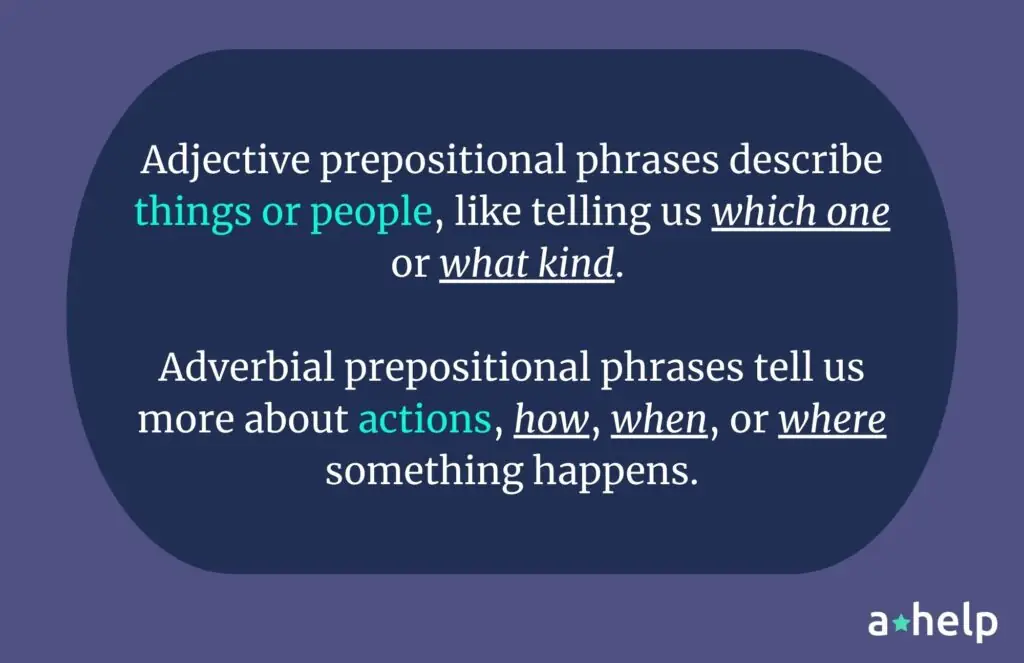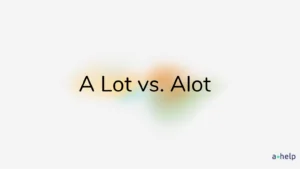Prepositional phrases are a fundamental part of English grammar, playing a crucial role in constructing meaningful sentences. A prepositional phrase begins with a preposition, such as “in,” “on,” “at,” or “with,” and is followed by an object, usually a noun or pronoun. These phrases provide additional information about time, location, direction, or relationships between elements in a sentence. Understanding how to use prepositional phrases effectively can greatly enhance your writing and speaking skills, adding clarity and detail to your communication. In this guide, we’ll explore the different types of prepositional phrases, their functions, and how to incorporate them into your sentences correctly.

✅ AI Essay Writer ✅ AI Detector ✅ Plagchecker ✅ Paraphraser
✅ Summarizer ✅ Citation Generator
The Concept of Prepositional Phrases
A preposition is a word that shows the relationship between a noun or pronoun and other elements in a sentence. Common prepositions include “in,” “on,” “at,” “by,” and “with.” A prepositional phrase is a group of words that begins with a preposition and ends with a noun or pronoun, known as the object of the preposition. This phrase provides additional information about time, location, direction, or relationships.
For example, in the sentence “The book is on the table,” the prepositional phrase “on the table” tells us where the book is located. The preposition “on” indicates the relationship between the book and the table, and “the table” is the object of the preposition.
Another example is “She arrived at noon.” Here, “at noon” is the prepositional phrase that tells us when she arrived. “At” is the preposition, and “noon” is the object of the preposition.
Prepositional phrases are essential for adding detail and clarity to sentences, helping to paint a clearer picture of the action or situation being described.
Types of Prepositional Phrases
Prepositional phrases can function as either adjectives or adverbs, depending on what they modify in a sentence.
Adjective Prepositional Phrases
These phrases modify nouns or pronouns, providing more information about them. For example, in the sentence “The man with the hat is my uncle,” the prepositional phrase “with the hat” modifies the noun “man” by telling us which man is being referred to. Another example is “The book on the shelf is mine,” where “on the shelf” modifies the noun “book” by describing its location.
- The cat on the roof is sleeping.
- The flowers in the garden are blooming.
- The painting by Picasso is valuable.
- The letter from John arrived yesterday.
- The book with the red cover is mine.
- The students in the class are attentive.
- The house with the white fence is for sale.
- The cake with the chocolate frosting is delicious.
- The car in the garage is new.
- The dress on the mannequin is stylish.
- The apples in the basket are fresh.
- The bird on the branch is singing.
- The phone with the cracked screen still works.
- The people at the party are friendly.
- The key under the mat is hidden.
Adverbial Prepositional Phrases
These phrases modify verbs, adjectives, or other adverbs, often indicating time, manner, place, or reason. For instance, in the sentence “She arrived before noon,” the prepositional phrase “before noon” modifies the verb “arrived” by telling us when she arrived. In “He spoke in a low voice,” the phrase “in a low voice” modifies the verb “spoke” by describing the manner of speaking.
- She arrived before dawn.
- He spoke with confidence.
- They danced under the stars.
- She left in a hurry.
- The meeting was postponed until tomorrow.
- He waited for hours.
- They traveled by train.
- She smiled with joy.
- The store is open until midnight.
- He works from home.
- The flowers bloom in spring.
- She sings with passion.
- The children played outside all day.
- He studied throughout the night.
- She whispered in a low voice.

Mistakes to Avoid When Using Prepositional Phrases
Creating effective prepositional phrases is absolutely key for clear and accurate communication. Here are some tips to help you choose the right preposition and avoid common mistakes that need a proper grammar check. Here are some tips to help you choose the right preposition and avoid common mistakes.
📍 Each preposition has its own specific meaning. Make sure you understand the relationship you want to express between the elements in your sentence and choose the preposition that best conveys that relationship.
📍 The context of the sentence can affect the choice of preposition. Pay attention to the surrounding words and the overall message of the sentence to select the most appropriate preposition.
📍 Sometimes, prepositions are used where they aren’t needed. For example, “Where are you at?” should be “Where are you?” Be concise and avoid adding extra prepositions that don’t add meaning to the sentence.
📍 A dangling preposition occurs when a prepositional phrase is left hanging without an object. For example, “This is the book I was talking about.” To avoid this, you can rephrase the sentence to “This is the book about which I was talking.”
Conclusion
Prepositional phrases are a key component of English grammar that add depth and clarity to our sentences. They consist of a preposition followed by an object and can function as adjectives or adverbs, providing essential information about location, time, direction, and relationships. By mastering the use of prepositional phrases, you can improve the precision and expressiveness of your writing and speech. Remember to pay attention to the choice of preposition and the placement of the phrase in the sentence to ensure your message is conveyed accurately.
FAQ
Follow us on Reddit for more insights and updates.





Comments (0)
Welcome to A*Help comments!
We’re all about debate and discussion at A*Help.
We value the diverse opinions of users, so you may find points of view that you don’t agree with. And that’s cool. However, there are certain things we’re not OK with: attempts to manipulate our data in any way, for example, or the posting of discriminative, offensive, hateful, or disparaging material.